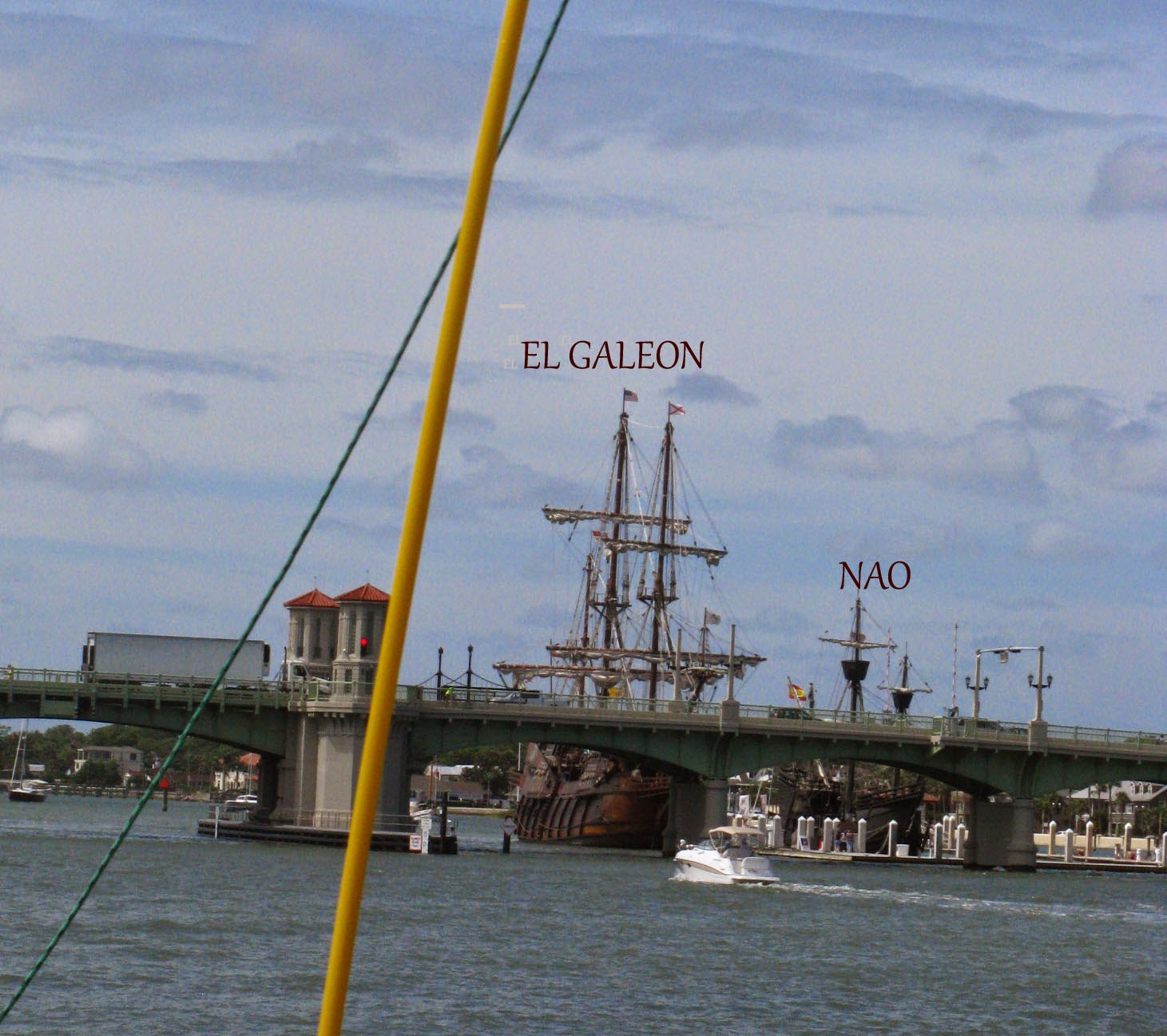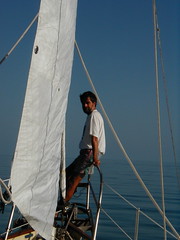There were thunderstorms while we were at anchored but nothing significant; we shopped for food and beer in order to make sure we would have enough goodies for the ICW. Luckily, the ICW had been dredged in Florida...what a breeze compared to 2010! Matanzas inlet: 14 feet! Wow!!!
The number of huge and empty houses (occupied only certain weeks in the year) is growing in south Florida which gives the surroundings an eery stillness to places. There is still quite a bit of wildlife along the waterway (surprisingly): we saw several manatees, dolphins, and many shorebirds including roseate spoonbills!
Upon arrival in St Augustine, we saw that there were 2 old ships docking near the Lion's bridge!
As we circled almost 20 minutes before passing the bridge, there was plenty of time for taking photos.
El GALEON is a replica of the vessels that traveled the coasts of Florida between the 16th and 18th centuries, transporting men, goods, culture and ideas, creating ties between America and Europe. Then named the San Pelayo, the 650-ton ship was one of the most powerful ships of its day. It was the most important of several ships that carried 800 colonists and supplies to St. Augustine, establishing the first permanent European settlement in the United States in 1565. The San Pelayo was an enormous vessel – it carried 77 crewmen, 18 gunners, and transported 317 soldiers and 26 families, as well as provisions and cargo (including cattle). Her armament was iron cannons and artillery. She was built in 1564 just outside the gated city of Aviles, Spain (Menenedez’s birthplace).
As for the much smaller ship, the NAO VICTORIA, it is a replica of the Spanish ship to successfully circumnavigate the world under the commands of the Portuguese explorer Ferdinand Magellan. The Victoria was the sole ship of the 5 ships flotilla to finish its mission: 18 men out of 245 survived the 32,000 mile trip. Very impressive story.
That evening, we anchored in the ICW in a beautiful marsh, listening to the birds and dreaming about long past explorations. Of course, smoking a little Dominican cigar and drinking Bahamian rum made that evening especially enjoyable!
And so, we left St John's river in the morning for an early arrival in Charleston, south Carolina next day. The was lots of traffic at sea during the night around Savannah and our AIS system (one can see the name and details of ships on a radar type screen) made the trip much less stressful.
The weather was calm upon entering Charleston harbour. Fort Sumter greeted us...
Good bye Charleston!
And so ended this adventure after 1500 nautical miles!

















1 comment:
I miss this :-) Sounds like a wonderful trip and you both look great! Alisa
Post a Comment